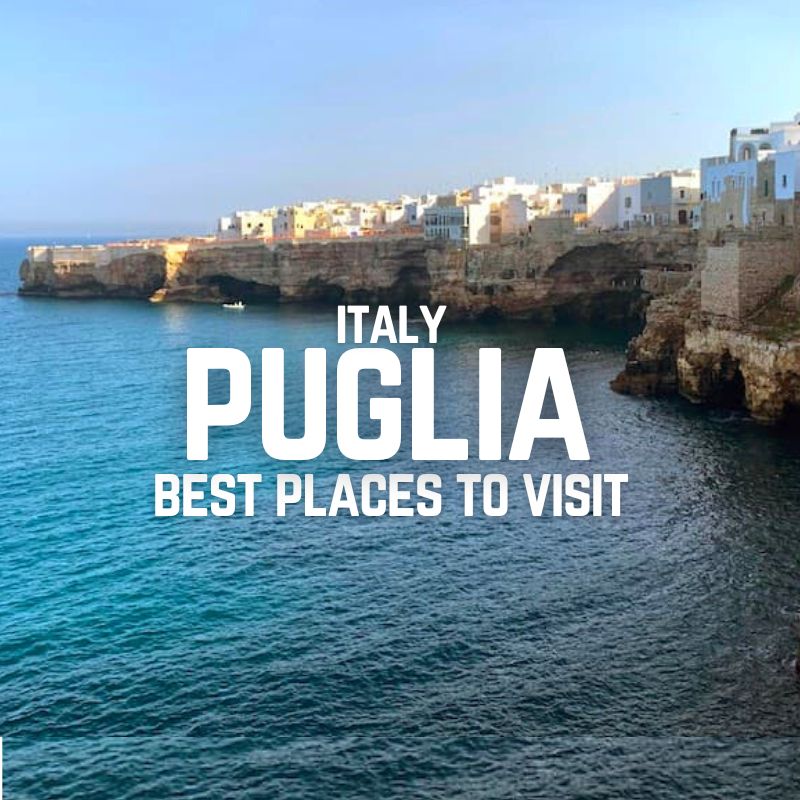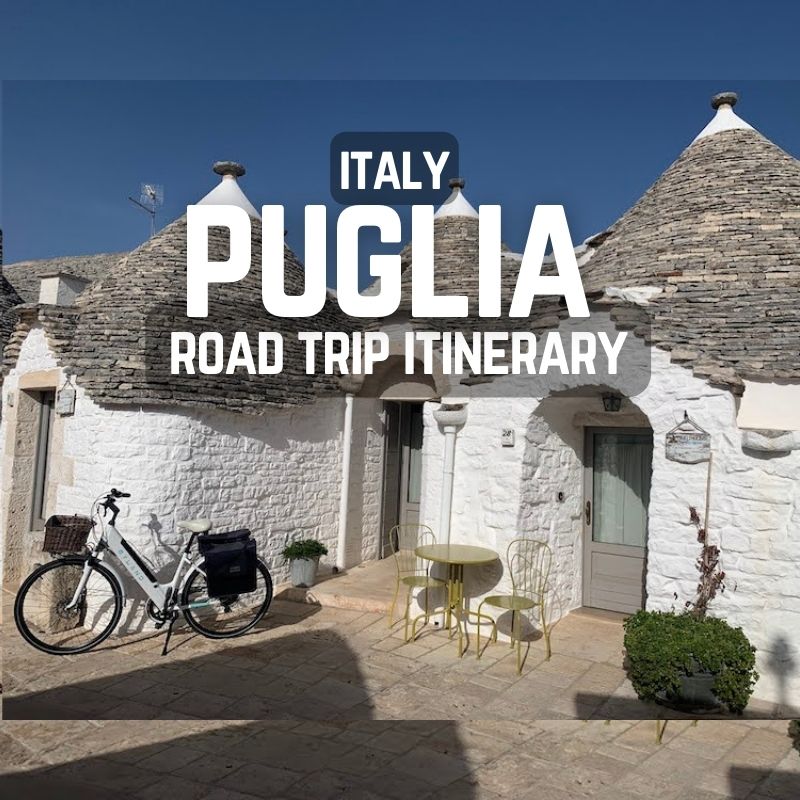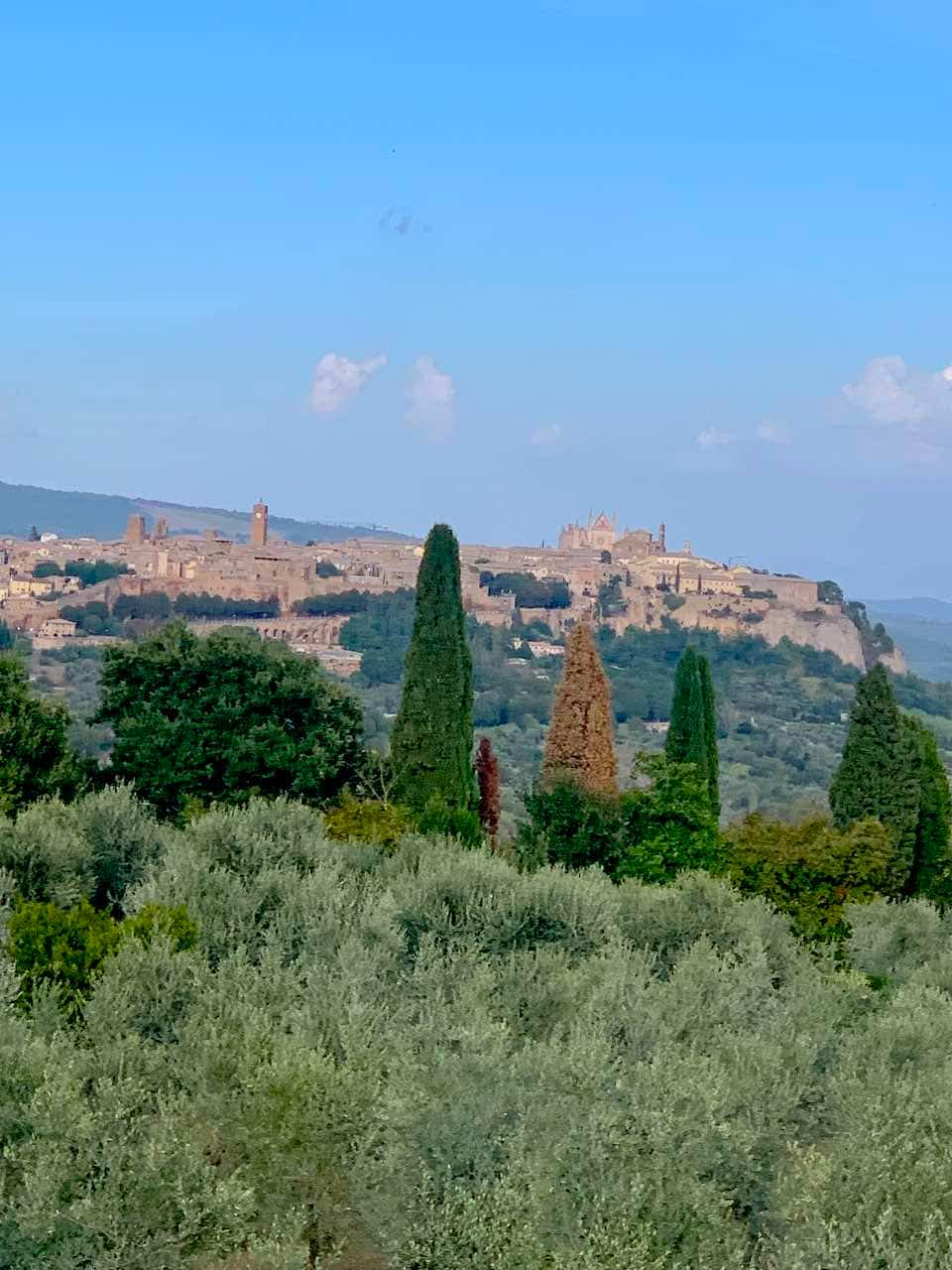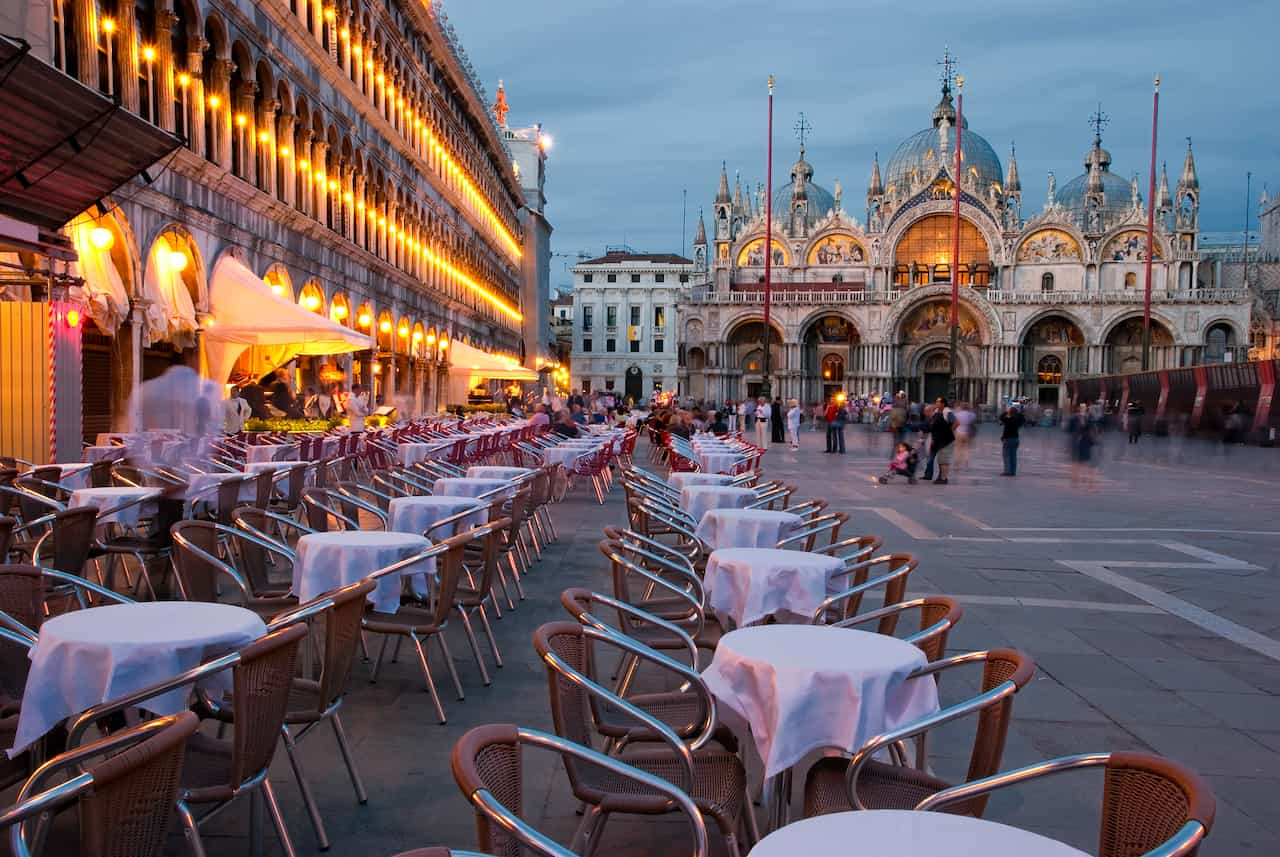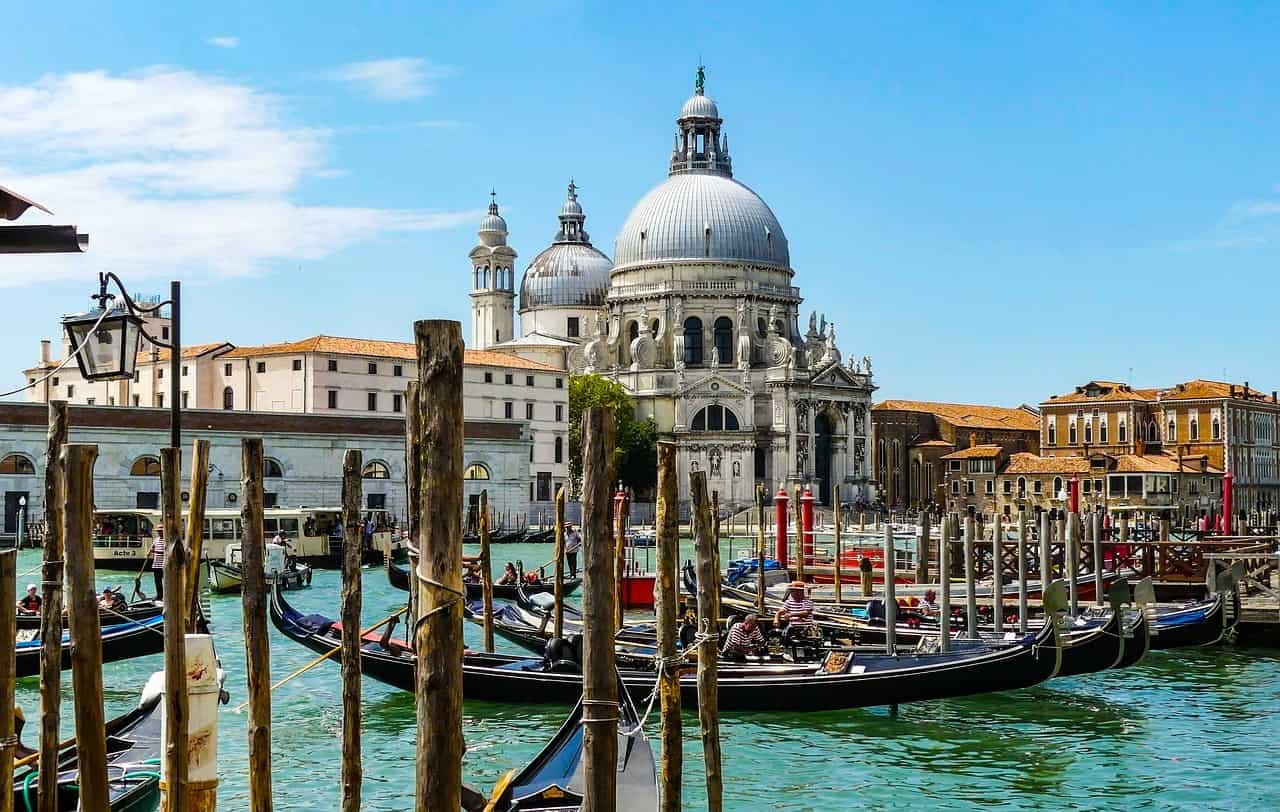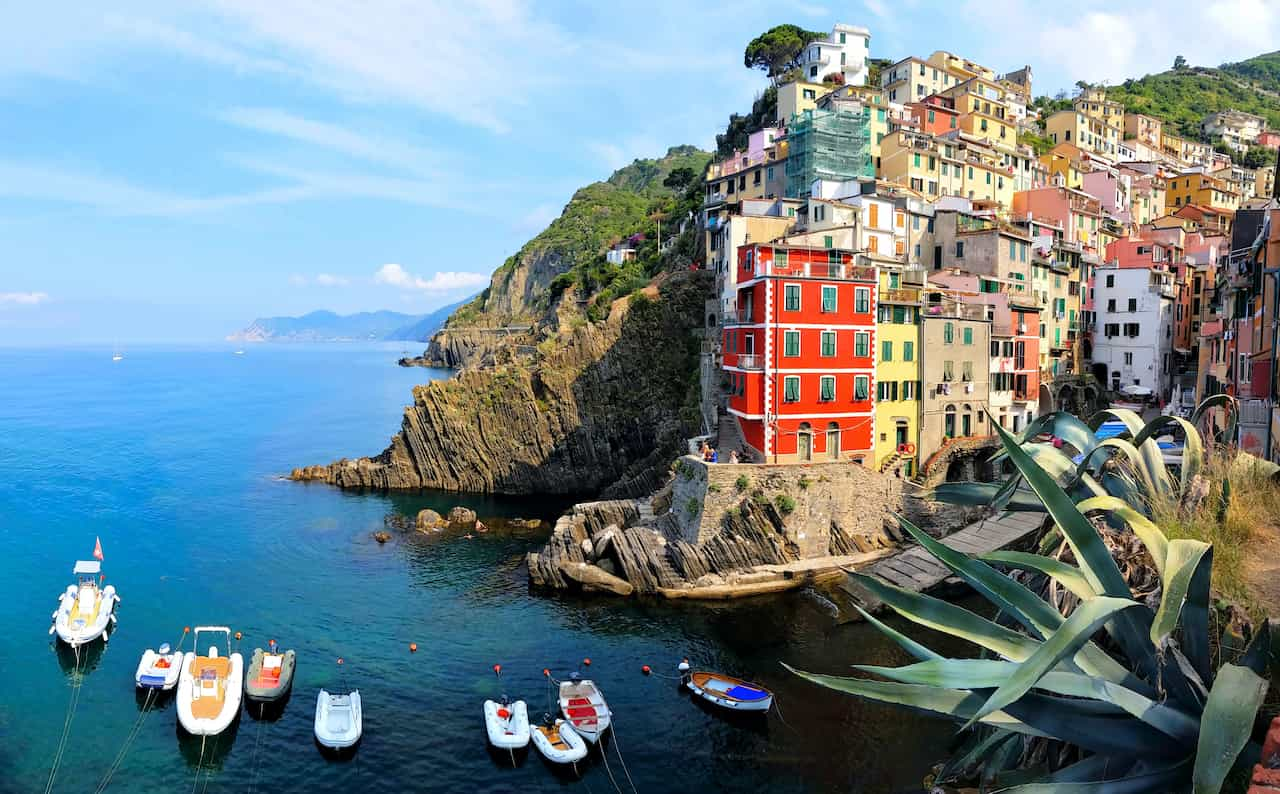A Guide to The Best Things to Do in Padua Italy (With Tips & The Best Padua Day Trips)
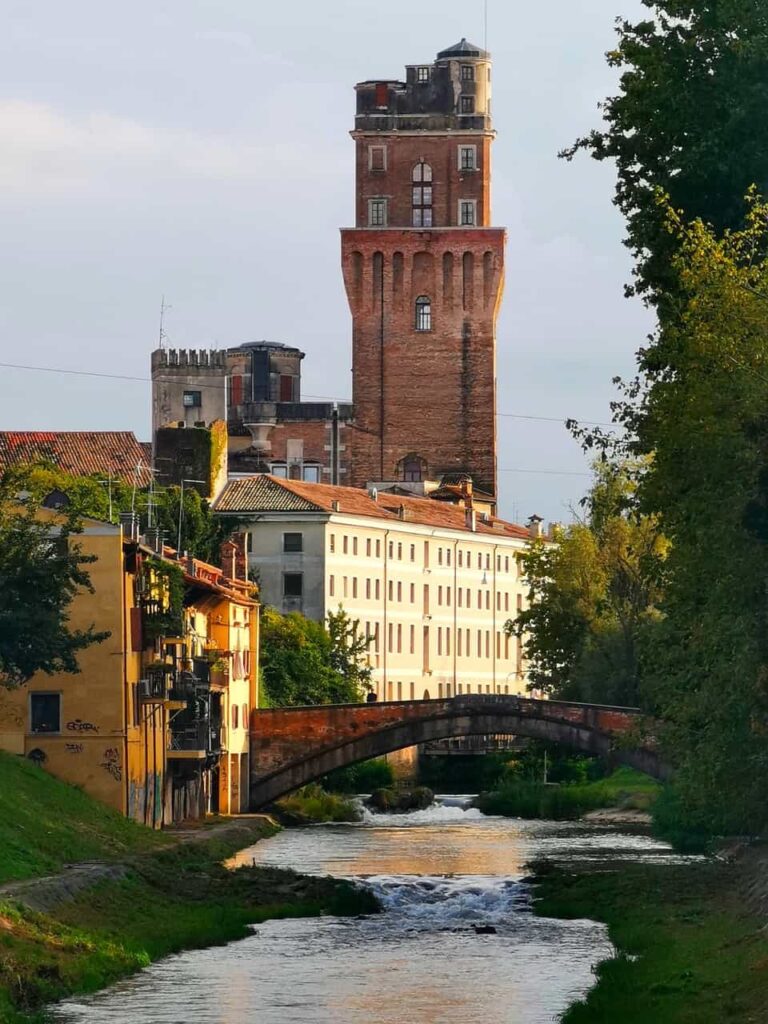
If you want to immerse yourself in the charm of Italy, but avoid the bustling crowds of more famous cities like Venice or Florence, Padua should definitely be on your radar.
Nestled in the Veneto region of northern Italy and just a short ride from Venice, Padua (Padova in Italian) offers an authentic Italian experience full of charm and rich history. Did you know that Padua is one of the oldest cities in Italy, founded in the 12th century BC? It’s home to landmarks that have stood the test of time, including one of the oldest universities in the world and stunning architecture that tells stories of centuries gone by.
Padua is also home to one of the most famous pilgrimage sites in Italy – the Basilica of St Anthony of Padua. Aside from its spiritual significance, Padua has two UNESCO World Heritage Sites: the Scrovegni Chapel and the Botanical Garden of Padua. The city’s rich history is reflected in the Scrovegni Chapel, home to the spectacular frescoes by Giotto. The Botanical Garden of Padua is a UNESCO World Heritage site that’s been around since 1545. It’s one of the oldest botanical gardens in the world and is a peaceful oasis in the middle of the city.
When I visited Padua, I couldn’t help but feel enchanted by its blend of art, history, and the unhurried pace of local life. If you’re thinking of heading to this incredible city, I’ve compiled a list of the best things to do in Padua—activities that will make your trip unforgettable.

THIS POST MAY CONTAIN COMPENSATED LINKS. PLEASE READ MY DISCLAIMER FOR MORE INFO.
Best Things to Do in Padua Italy: From History to Hidden Secrets
Padua may not be as well-known as Venice, but it has its own unique charm, full of hidden gems waiting to be explored. Let me take you through some of the best things to do in Padua, so you can experience this magical city for yourself.
1. Marvel at the Scrovegni Chapel
One of my first stops was the incredible Scrovegni Chapel, and let me tell you, it was worth every moment. Known for its stunning frescoes by Giotto, this chapel is a masterpiece of medieval art. As I stepped inside, the vivid colors and intricate details of the paintings left me in awe. The artwork tells a beautiful, yet dramatic story, and you can almost feel the history come alive. It’s an experience that will stay with me for a long time.
To protect the delicate frescoes by Giotto, entry is strictly regulated. You’ll need to buy tickets in advance, especially during peak tourist seasons. You can book them online. Tickets typically include a timed entry (with a short introductory video) to limit the number of visitors inside at any one time.
Practical info: The chapel is usually open Tuesday to Sunday, from 9:00 am to 7:00 pm, with a break in the afternoon. It’s closed on Mondays, so plan accordingly. Entry fees range from around €15 for adults, with discounts for students and groups. The visit to the chapel typically lasts about 20-30 minutes. Since the chapel is a religious site, be sure to dress modestly—covered shoulders and knees are recommended.
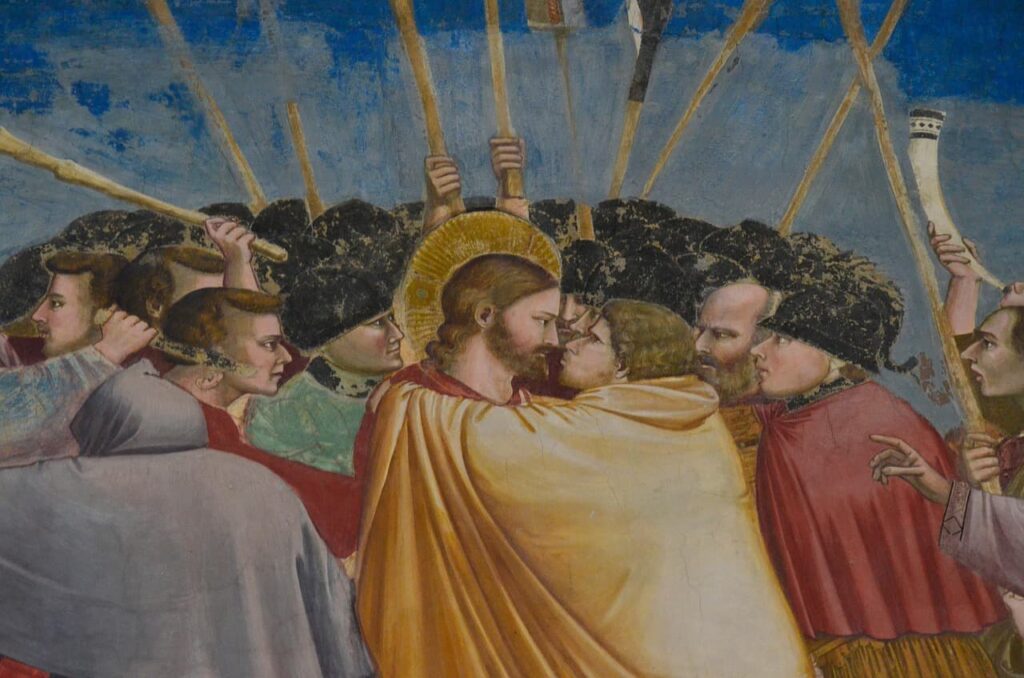
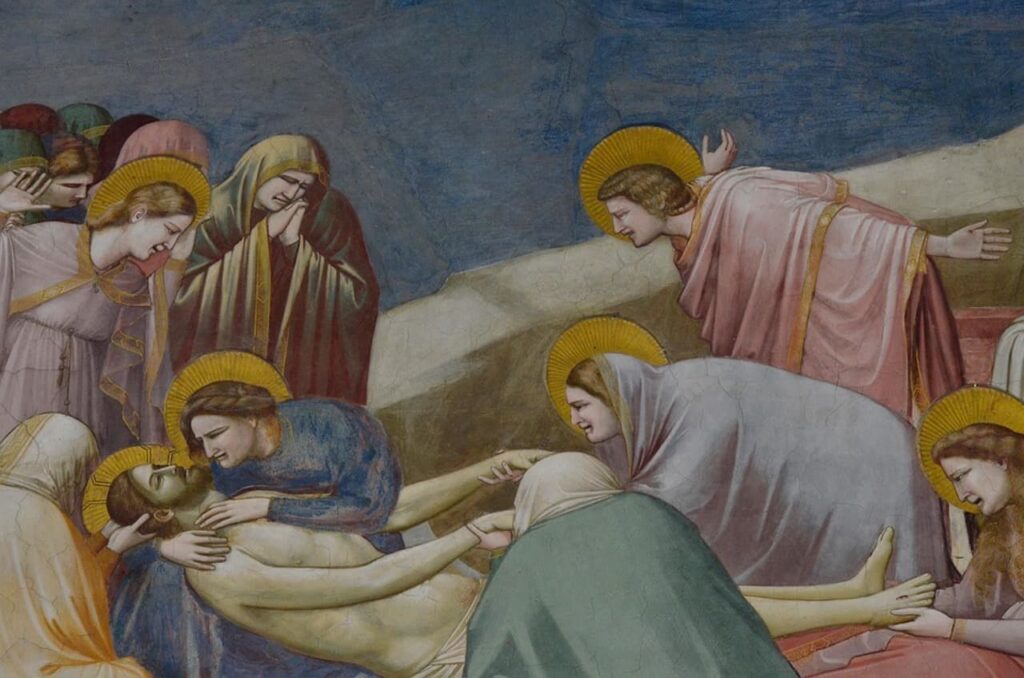
2. Admire the Basilica of St. Anthony
Another must-see is the Basilica of St. Anthony, one of the most important pilgrimage sites in Italy. To tell the truth, visiting the tomb of St Anthony of Padua was my main reason for visiting Padua. On my arrival at the Basilica, I was struck by the grandeur and serenity of the basilica, not to mention its fascinating blend of architectural styles. The tomb of St. Anthony, with its stunning mosaics, is a peaceful place to reflect and admire the artistry. The basilica also houses several relics and art pieces that offer a glimpse into the history of this beloved saint.
Practical info: The Basilica is usually open every day from 6:30 am to 7:00 pm. However, the interior may be closed during Mass times (typically 7:00 am, 12:00 pm, and 6:00 pm), so if you prefer to visit when it’s quieter, try to go during non-Mass hours. Entrance to the Basilica is free. As with most religious sites in Italy, modest attire is recommended—cover your shoulders and knees before entering.
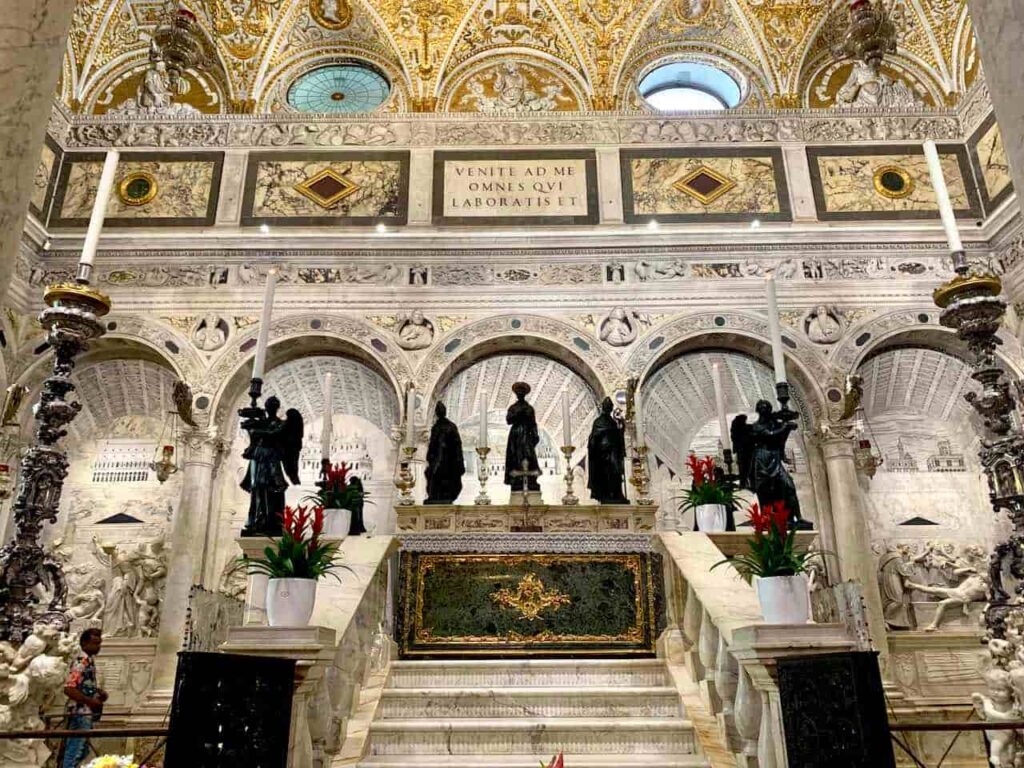
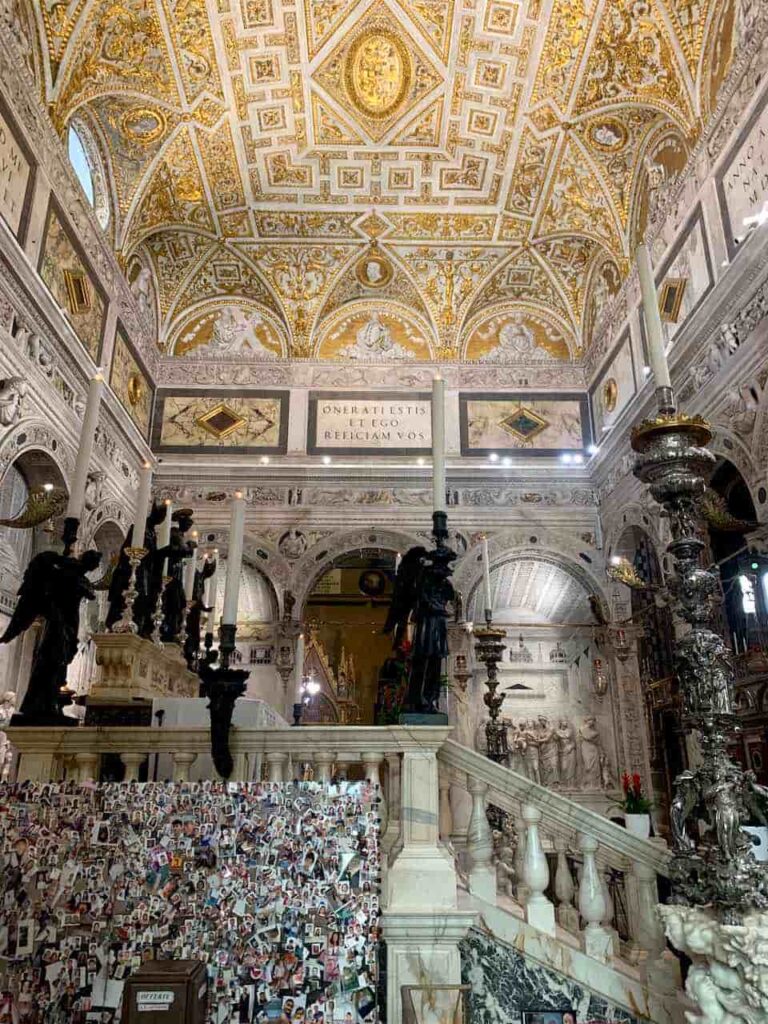
3. Stroll Through Prato delle Valle
If you want to soak up some sunshine and enjoy the outdoors, a visit to Prato delle Valle is a must. This vast square, one of the largest in Europe (covering about 88,000 square meters), is surrounded by beautiful statues and a peaceful canal. The impressive series of 78 statues that line the canal represent various prominent figures from Padua’s past—scholars, saints, and historical leaders. At the heart of Prato delle Valle is an island with a large green lawn where people often relax or enjoy picnics. I spent wonderful moments just walking around, people-watching, and soaking in the atmosphere. Whether you’re stopping for a gelato or just enjoying the green space, Prato delle Valle is the perfect spot to relax and unwind.
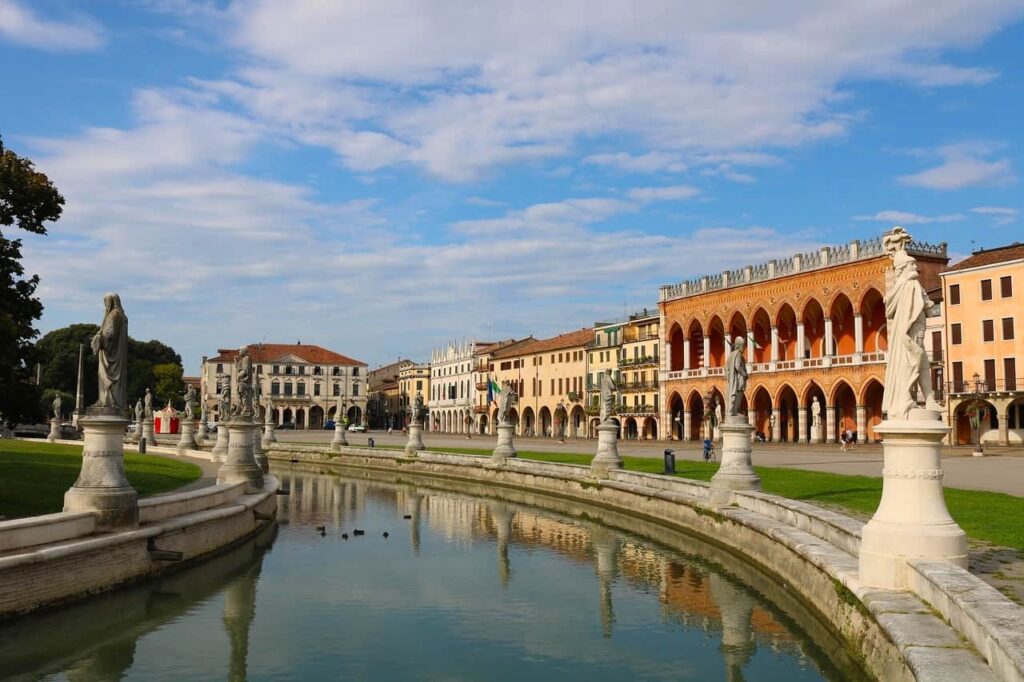
4. Tour the University of Padua
As a history and culture enthusiast, I couldn’t miss a tour of the University of Padua, one of the oldest in Europe. Founded in 1222, the university has been home to some of the greatest minds in history, including Galileo. On the tour, we explored Bo Palace, the university’s stunning historical headquarters, and its historic classrooms, including the Anatomy Theatre, where groundbreaking dissections were conducted. The tour gave glimpses of the university’s rich scientific history, showcasing its contributions to fields like medicine, astronomy, and law. Exploring the historic buildings and learning about their legacy was a truly inspiring experience.
Practical info: Tours of the Bo Palace are usually available from Monday to Saturday, with tours typically starting from 9:30 am to 5:30 pm. Entry to the Bo Palace is usually around €8 for adults, with discounted rates for students, seniors, and groups. A full tour of the Bo Palace and major university attractions takes up to 2 hours. Buy your ticket online in advance on the university’s official site.
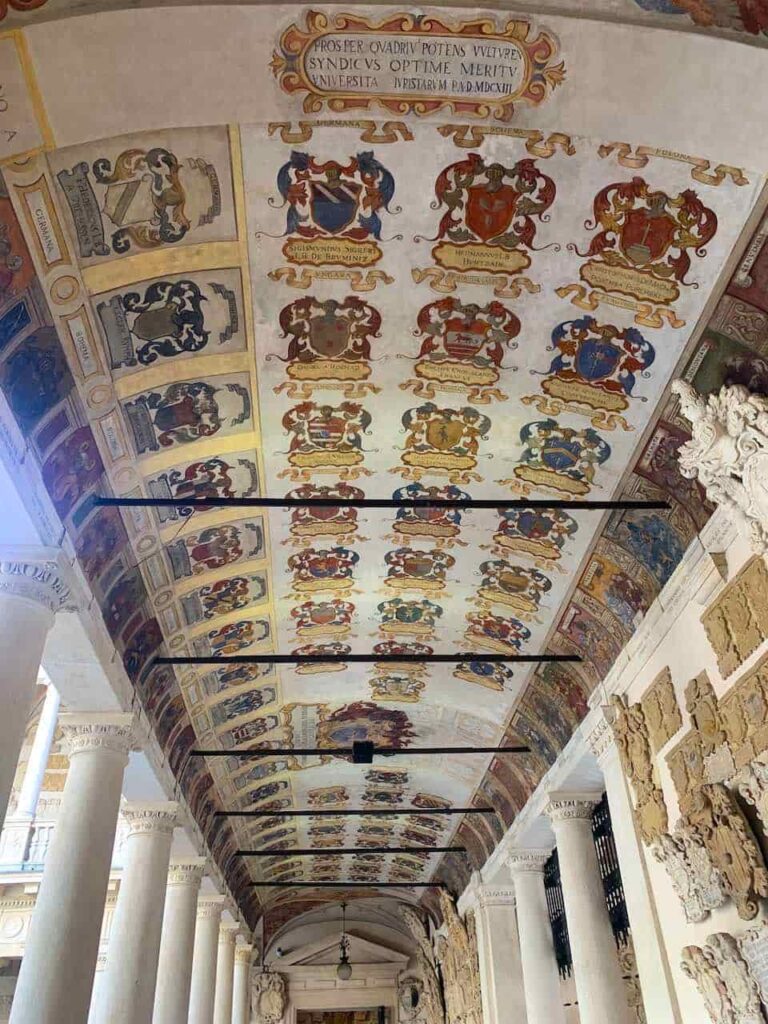
5. Visit the Botanical Garden of Padua
The Botanical Garden of Padua, located nearby, is another gem and a UNESCO World Heritage site. The garden is not only beautiful but historically significant as it was the first botanical garden ever established in 1545. The Botanical Garden of Padua is a peaceful, lush oasis in the heart of the city, featuring a vast array of plants, including rare species and historical varieties. With its beautifully designed pathways, ponds, and glasshouses, it’s not only a place of scientific research but also a tranquil escape, offering visitors a chance to connect with nature and discover the history of plant study.
Practical info: The Botanical Garden of Padua is located at Via Orto Botanico, 15. It is open daily from 9:00 am to 7:00 pm, with varying hours in the off-season. Admission costs €10, with discounts available for students and groups.
6. Explore the Markets and Local Life
No trip to Padua is complete without a visit to its bustling markets. I wandered through Piazza dei Signori, Piazza delle Erbe, and Piazza della Frutta, where I found fresh produce, handmade goods, and a lively atmosphere. You’ll find fresh local produce, flowers, spices, meats, cheeses, and a variety of local products like tramezzini (sandwiches) and bigoli (pasta). Each square has its own specialty: Piazza delle Erbe and Piazza della Frutta are more focused on food, while Piazza dei Signori has a mix of both food and local artisan goods.
The markets were the perfect place to pick up some souvenirs, try local delicacies, or simply enjoy the vibrant energy of the city. You’ll see both locals and tourists alike haggling over fresh cheeses and meats, making it a truly authentic experience.
Practical info: The markets are open every day (except on Sunday), usually from early morning until around 1:00 PM, with peak activity between 10:00 AM and noon. If you want to experience a quieter, more relaxed visit, try to arrive earlier in the morning. Most vendors accept cash, but larger stalls or those offering more general products may accept cards
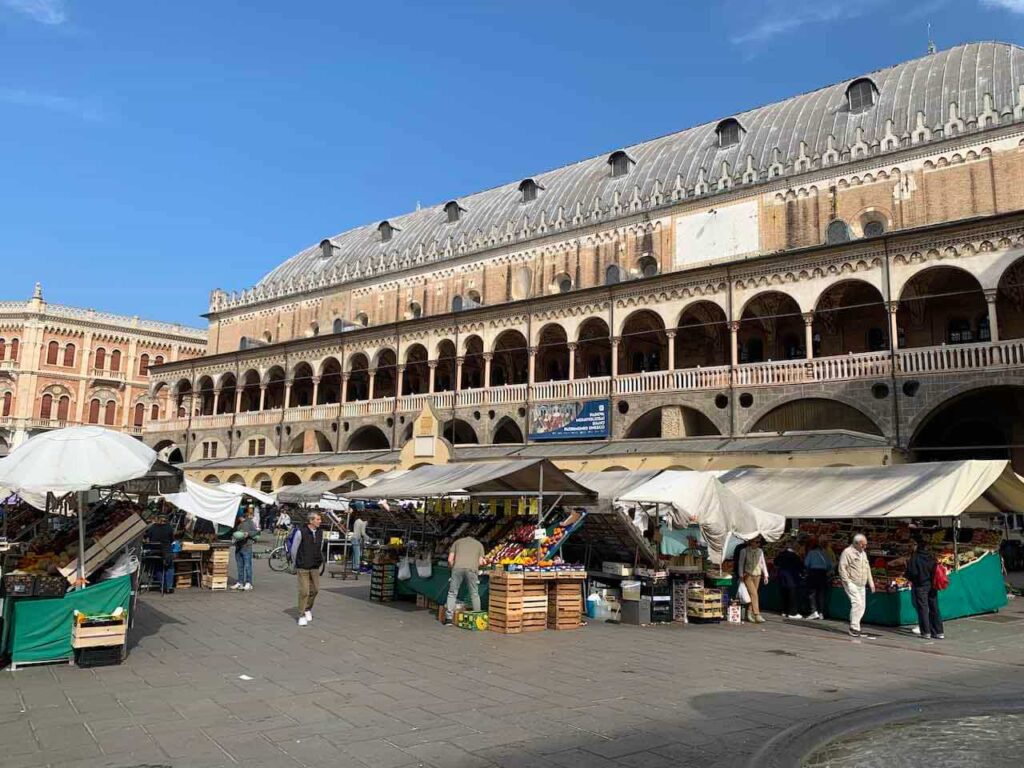
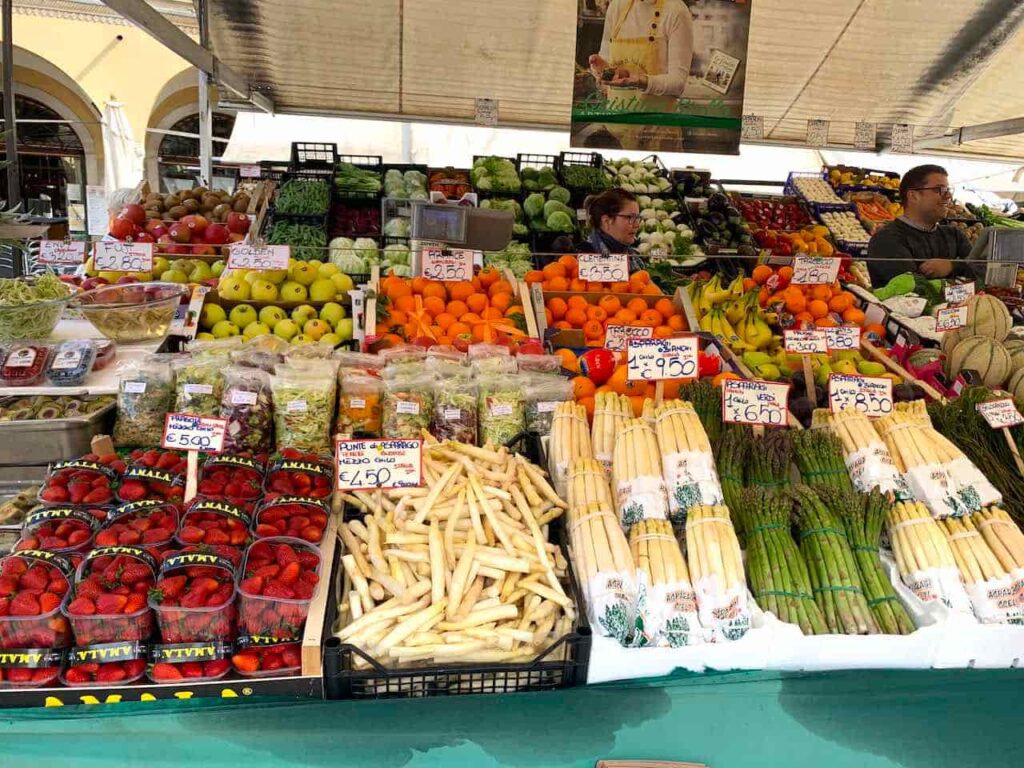
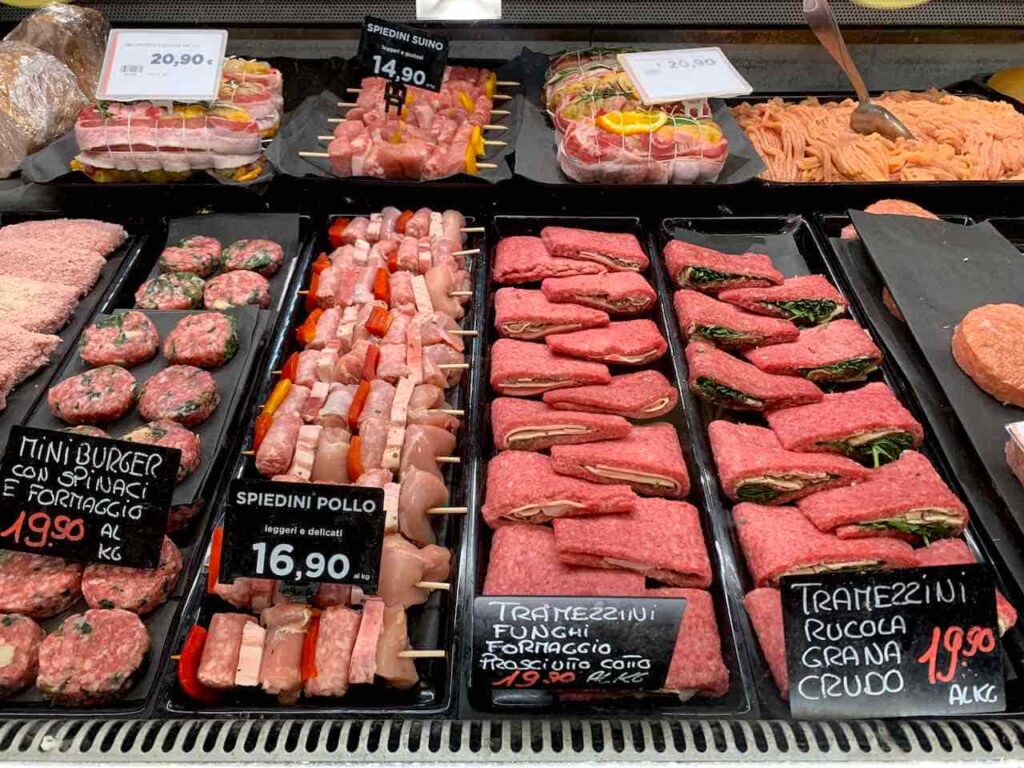
7. Discover the Astronomical Clock
If you’re a fan of astronomy or just love learning about the universe, Padua has something special for you. The Astronomical Clock in Piazza dei Signori was fascinating to see up close, with its intricate mechanism and historic significance. This medieval clock not only tells time but also displays the position of the stars, the phases of the moon, and the zodiac signs, making it a true marvel of its era. Every hour, the clock’s mechanical figures move, offering a fascinating display that’s both educational and visually captivating.
Practical info: The Clock Tower can be visited free of charge on Saturday (at 9.30 am, 11.15 am, 3.30 pm, and 5 pm), and on Wednesday and Friday (at 9.30 am and 11.15 am). Booking the time of the visit in advance is mandatory. Learn more here.
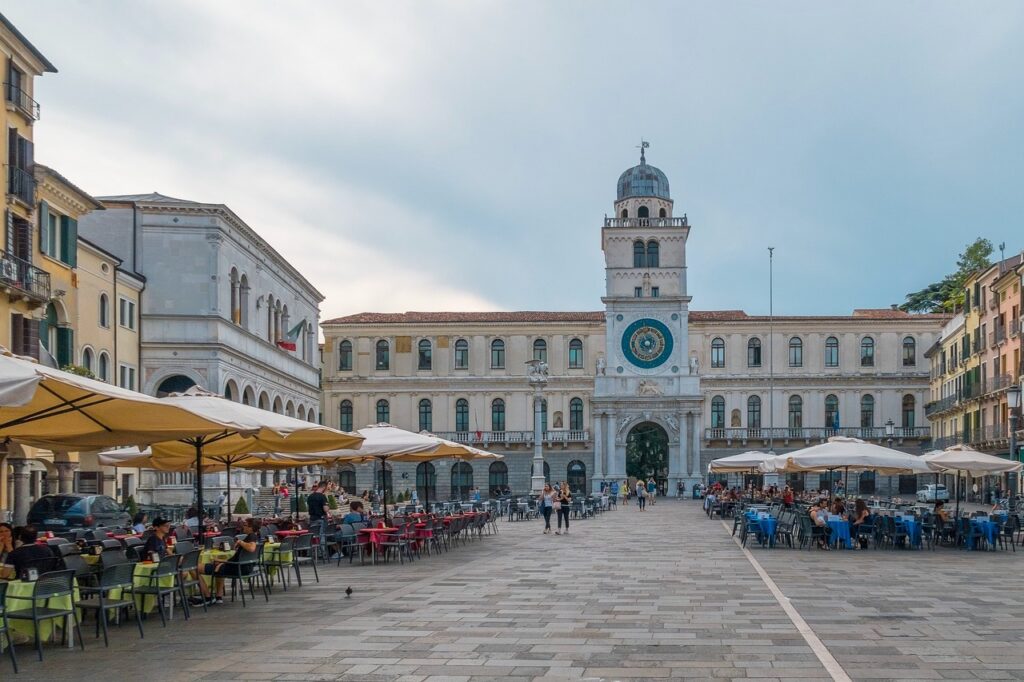
8. Visit the Astronomical Observatory
For a deeper dive into the cosmos, you can also visit the Astronomical Observatory and marvel at the stars through powerful telescopes, learning more about the skies above. The Astronomical Observatory of Padua is one of the oldest in Italy, established in 1761, and remains an important center for astronomical research. Located atop the Colle della Rocca, it offers stunning views of the city and the surrounding landscape. It’s a fascinating stop for anyone interested in the stars and the legacy of science in Padua.
Practical Info: Visits are held on Saturdays, Sundays, and holidays at 4 pm from October to April, and at 6 p.m. from May to September. Evening visits are available from May through October.

9. Savor a mint coffee at Café Pedrocchi
After a few hours of sightseeing, I stopped by the historic Café Pedrocchi, an iconic café in Padua that dates back to the 19th century. It is considered one of Italy’s most iconic coffee houses. Known for its elegant atmosphere, it has long been a gathering place for intellectuals, artists, and locals alike. Café Pedrocchi is famous for its mint coffee, a deliciously refreshing drink that I couldn’t resist trying. The café’s elegant atmosphere, combined with the rich history and charming décor, made it the perfect place to relax and take in the surroundings.
Practical info: Café Pedrocchi is located at Piazza dei Frutti in Padua. It’s open daily from 8:00 am to midnight, with extended hours on weekends.
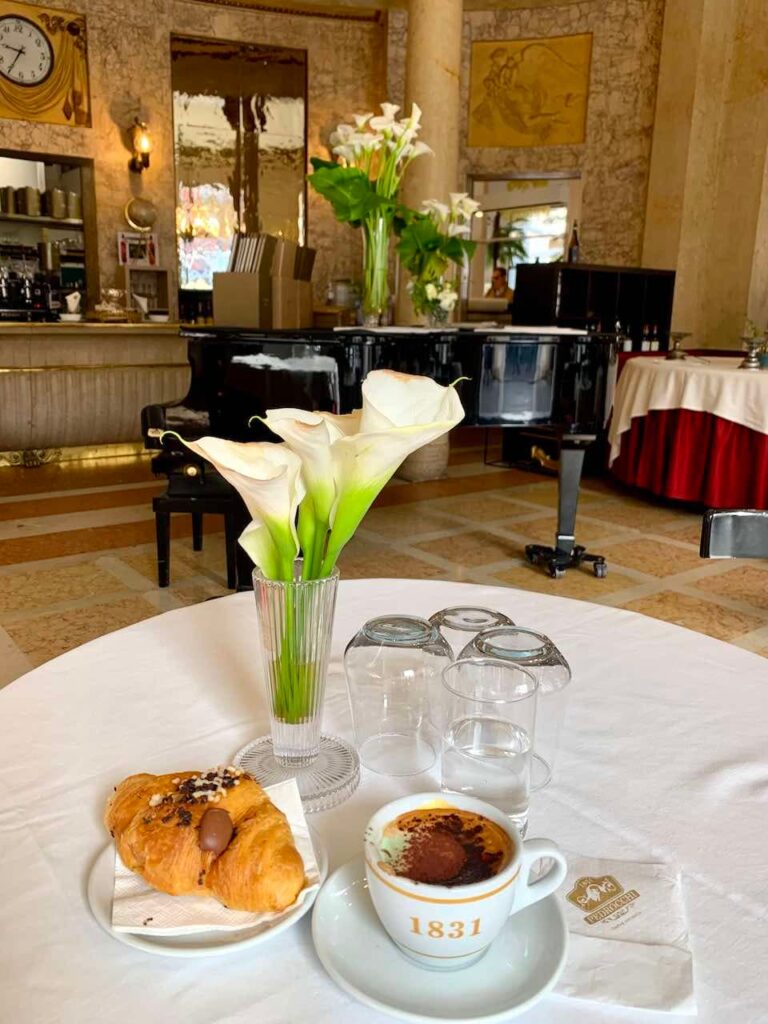
10. Visit the Padua Cathedral, Baptistery & Diocesan Museum
Padua’s religious sites are both awe-inspiring and humbling. I visited the Padua Cathedral (Duomo di Padova), the Baptistery of the Cathedral (Baptistero di Padova), and the Diocesan Musuem (Museo Diocesano di Padova), where I admired stunning art and learned about the city’s spiritual history.
While the cathedral itself is relatively simple on the outside, its interior is home to a magnificent fresco by Giambattista Tiepolo that graces the ceiling. Next to the cathedral is the Baptistery of the Cathedral, a fascinating and historically significant building. It features stunning frescoes from the 14th century by the famous artist Giotto and his followers. These frescoes beautifully depict the life of Christ and various biblical scenes, and they’re considered masterpieces of medieval art. Adjacent to the cathedral, you’ll find the Museum of the Diocese, which houses a collection of religious art and artifacts from the region. The museum’s exhibits include sculptures, paintings, and pieces of liturgical equipment from various periods, offering insight into Padua’s long history as a center of religion and culture. Some of the museum’s highlights include works from the Venetian Renaissance and an impressive collection of medieval sculptures.
Practical info: The Cathedral of Padua is located in the city center and is open daily for visitors, though mass services are held, so be mindful of the schedule. Entry to the Cathedral is free. The Baptistery is just next door, and the Diocesan Museum is a short walk away. You can get your ticket to the Baptistery and the Musuem online here.
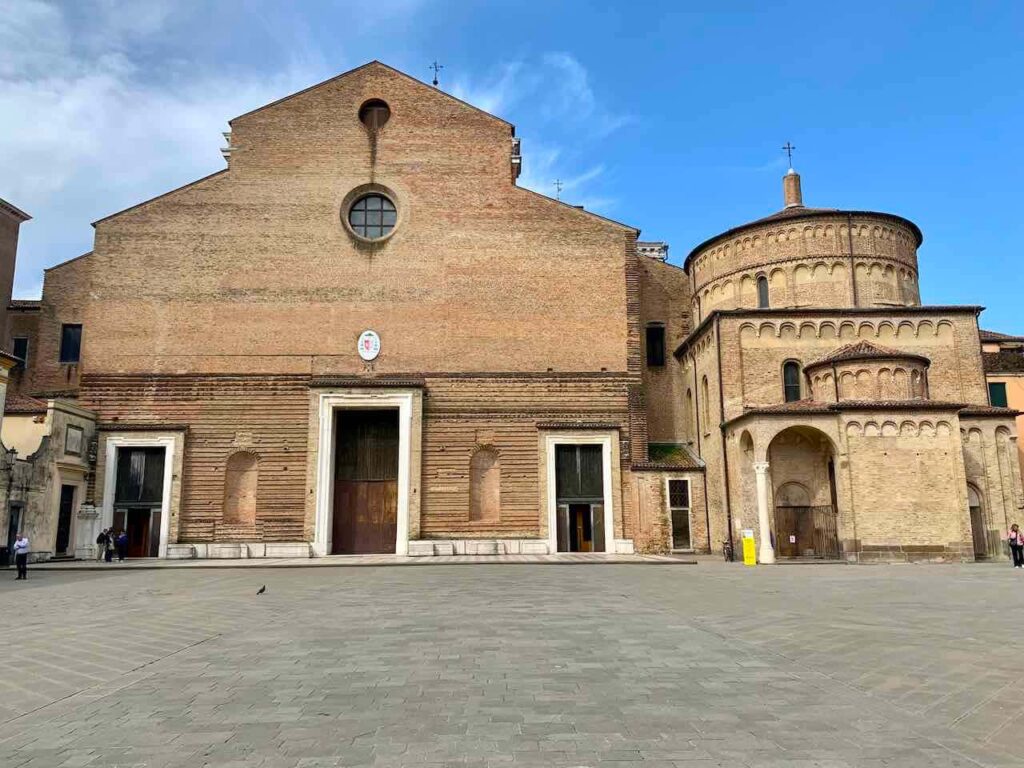
11. Wander through Padua’s Historic Streets
One of the things that immediately captured my heart was exploring the streets of the historic center of Padua. The city’s charm is in its ability to blend the old with the new, creating a welcoming and atmospheric vibe. Via Umberto I and Via Roma are two of the most picturesque streets, lined with beautiful architecture, charming boutiques, and cozy cafés. It’s the perfect place to lose yourself for a few hours, window shopping, people-watching, or simply soaking up the local life.
As I walked through these streets, I couldn’t help but admire the contrast between the ancient buildings and the bustling energy of the shops and cafes. It’s the kind of place that feels timeless, where history lingers around every corner, yet life moves forward with such vibrancy. Don’t forget to pause for a coffee at one of the outdoor cafés—it’s the perfect way to take in the scene. To get
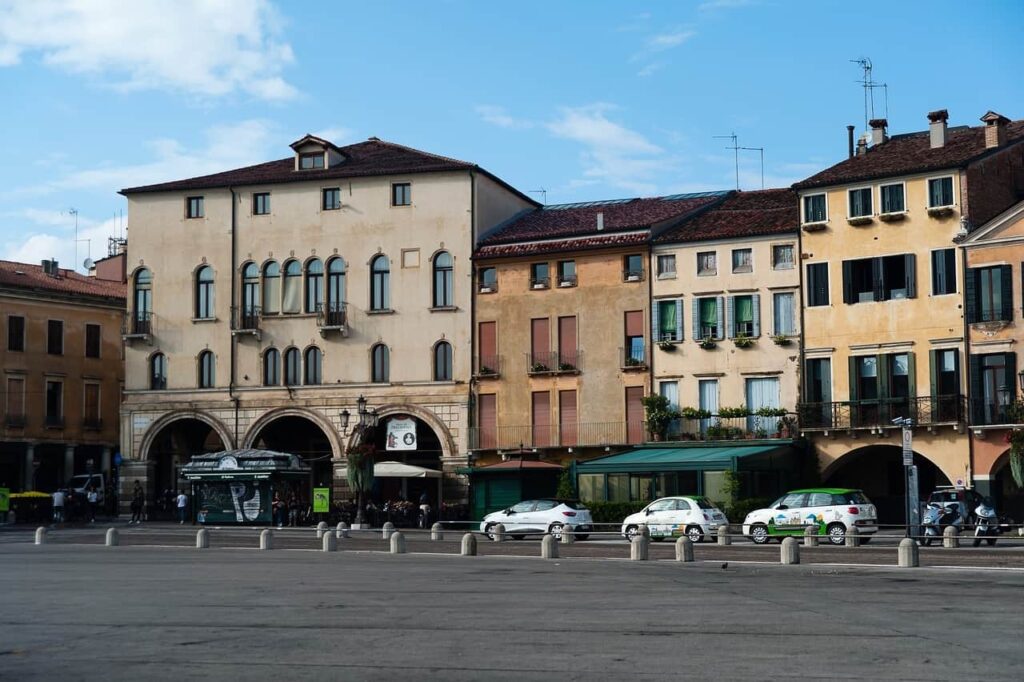
12. Go to the Sanctuary of Leopold Mandić, the saint patron of cancer patients
The Sanctuary of Leopold Mandić, dedicated to the patron saint of those suffering from cancer, was a moving stop, and it’s one of the city’s quieter and more reflective spots. Known for his deep compassion, gentleness, and commitment to hearing confessions, Saint Leopold is also a patron saint of confessions. Born in a Croatian family in Herceg Novi in today’s Montenegro, he spent most of his life as a Capuchin friar in the Province of Venice praying for the unity of the Eastern and Western Churches. The incorrupt body of St. Leopold Bogdan Mandić lies in a glass coffin in the Sanctuary, where visitors can also see a small confession room where he listened the confessions during his life. Visitors come here to pray for people suffering from cancer.
Practical info: The Sanctuary is typically open daily from 7:00 am to 7:00 pm, but you may want to check the local schedule for any changes. As it is a religious site, modest attire is recommended (covering shoulders and knees). For more info, check out the official site of the Sanctuary.
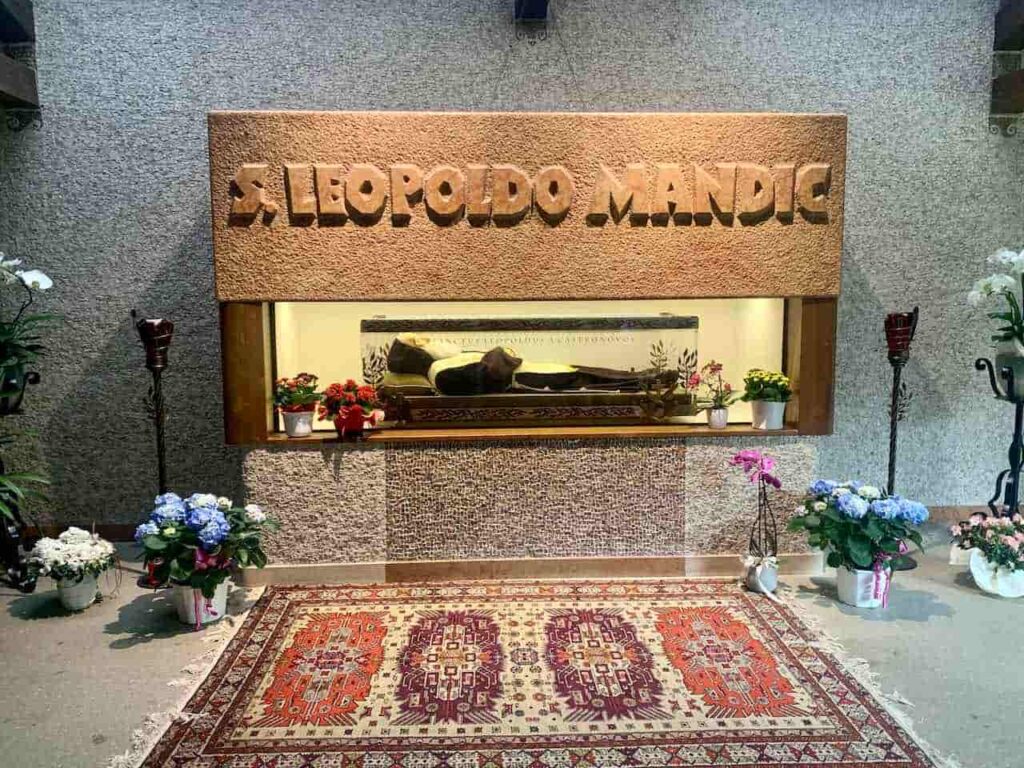
13. Visit the Church of the Eremitani
The Church of the Eremitani is a stunning piece of Padua’s history and a living testament to Padua’s deep-rooted connection to art and religion.
As soon as you step inside, you’re transported into a world of spiritual beauty and artistic mastery. The frescoes that adorn the walls of the church are the highlight. One of the most impressive fresco cycles in Italy is in the Ovetari Chapel. The frescoes were painted by none other than the renowned artist Andrea Mantegna. These frescoes, which tell stories from the Bible and depict the lives of saints, offer a glimpse into the past like no other.
Even though the church was severely damaged during World War II, many of the frescoes have been carefully restored, and today you can witness the magnificence of Mantegna’s work in all its glory. It’s not just about admiring art; it’s about stepping into a time where every brushstroke was a window into a different era.
Practical info: The Church of the Eremitani in Padua is located at Piazza Eremitani, close to other key attractions like the Scrovegni Chapel and the Padua Cathedral. The church is open to visitors, but it’s always a good idea to check the hours in advance as they can vary, especially on holidays. Entrance is free.
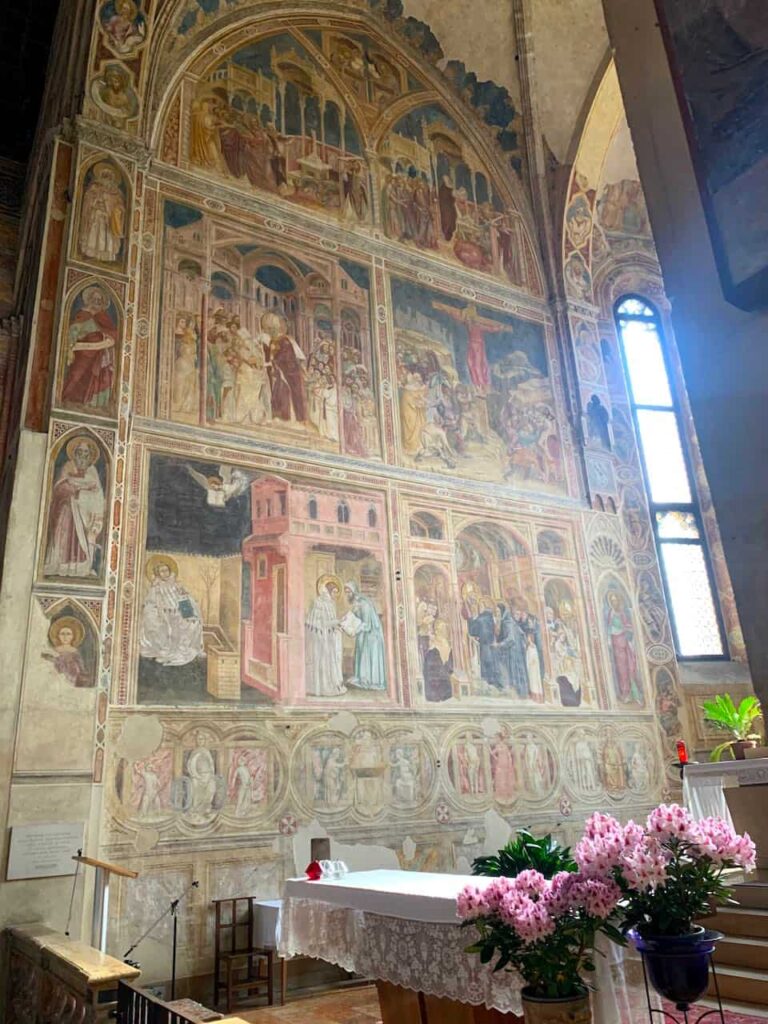
14. Discover Padua’s Jewish Heritage
Next up, a visit to Padua’s Jewish Heritage Museum and the Synagogue will not only enhance your understanding of the city’s complex past but will also leave you with a deep sense of connection to the stories of those who have lived here.
Padua’s Jewish community dates back to the 14th century, and the museum beautifully captures this long and rich history. As you explore, you’ll learn about the lives of the Jews who settled in Padua, their struggles, and their contributions to the city’s cultural fabric.
The highlight of this visit is undoubtedly the Padua Synagogue, an architectural gem that has withstood the test of time. Its ornate interior is a beautiful blend of tradition and grandeur, with intricately designed walls and stained-glass windows that create a serene, spiritual atmosphere. The contrast of the soft light with the warm colors of the interior evokes a deep sense of peace.
On this 1-hour tour of the Jewish Heritage Museum and Synagogue, you’ll learn not only about the religious and cultural significance of the Jewish community but also about the hardships they faced throughout history.
15. Cruise the Brent River
For a different perspective of the region, I highly recommend taking a cruise along the Brent River. The Brent River (also known as Fiume Brenta) flows from the Dolomites towards Venice, passing through charming towns and beautiful landscapes.
The cruise from Padua to Venice is a peaceful and scenic ride, that gives the chance to admire the grand villas like Villa Pisani and Villa Widmann – the historical landmarks with impressive architecture and beautiful gardens – that dot the riverbanks. The boat ride is a perfect way to escape the bustle of the city and enjoy the natural beauty surrounding Padua. You can admire over 20 villas and visit Villa Pisani, Villa Widmann, and Villa Foscari on this day cruise from Padua.
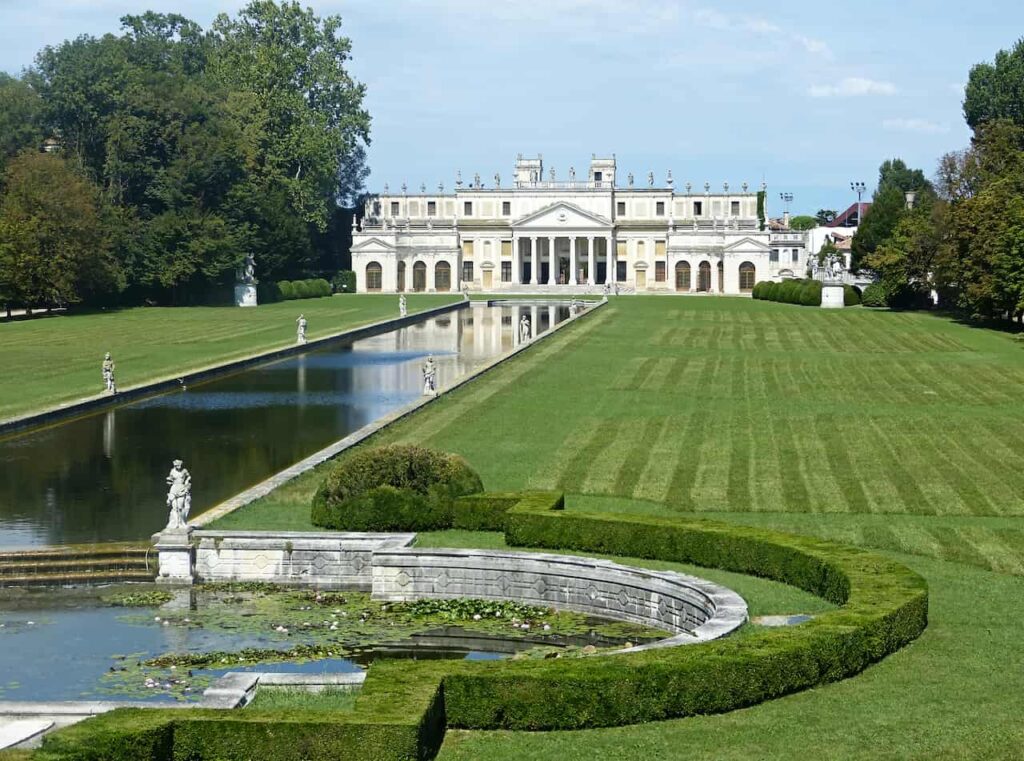
16. Indulge in Local Delicacies
As any true traveler knows, food is a big part of experiencing a place, and Padua did not disappoint. I couldn’t get enough of the local delicacies. I tried spunciotti, the traditional finger food of Padua, bigoli pasta, which is thick, delicious, and traditionally prepared with duck sauce in Padua, and the ever-popular tramezzino sandwiches. The highlight was definitely the Pazientina cake—a traditional Paduan sponge cake soaked in liqueur and zabaglione in Pasticceria Graziati.
If you’re a foodie, Padua is a dream! I recommend A Banda Del Buso for traditional Paduan treats.
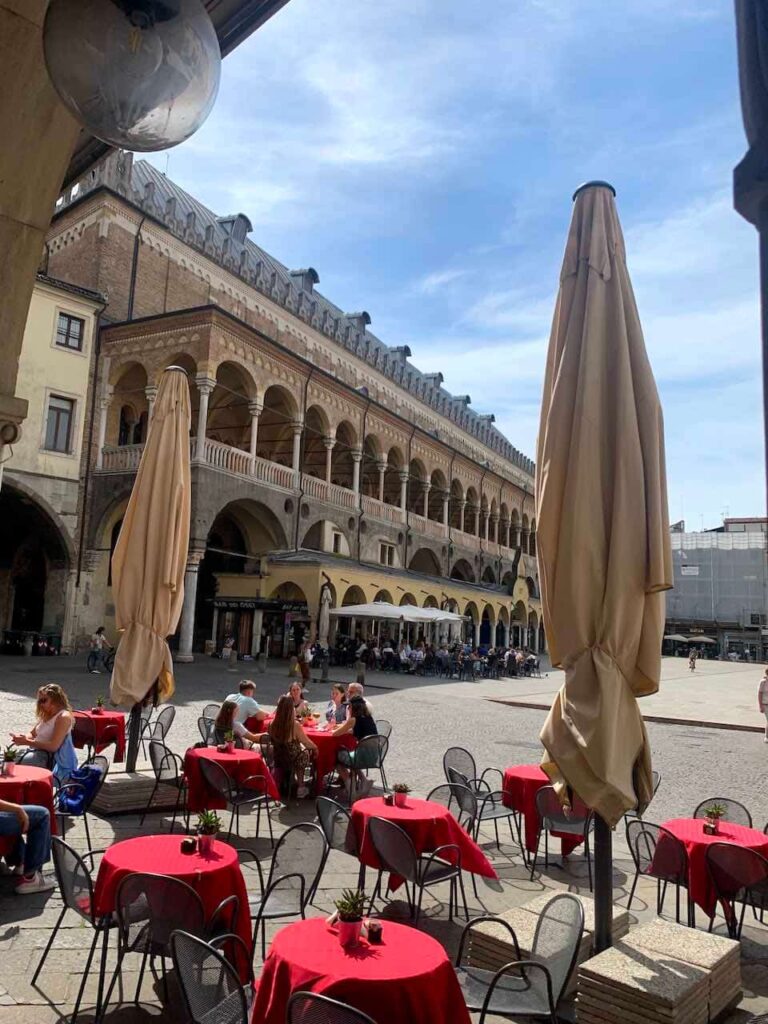
17. Learn to Cook Pasta and Tiramisu Like a Local
There is no doubt that one of the most memorable parts of a trip to Padua for foodies is to take an intimate cooking class at a local’s home and learn to make pasta from scratch and even whip up some traditional tiramisu. This 3-hour pasta and tiramisu cooking class is not just about food—it is a chance to connect with locals, hear their stories, and learn about their culture in a way that feels truly personal.
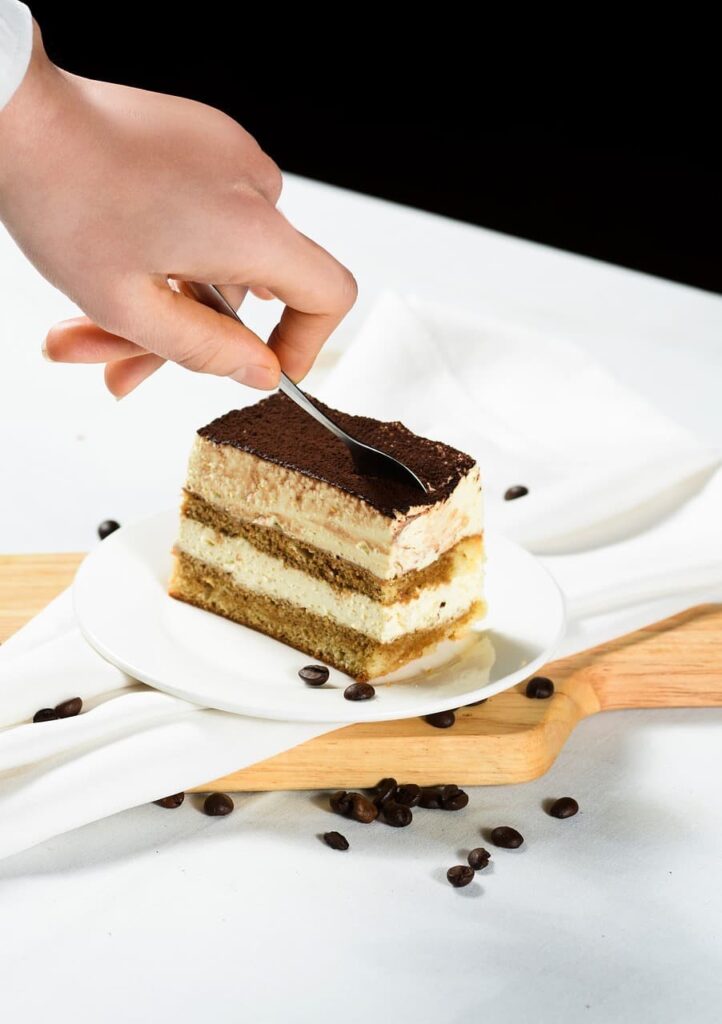
18. Take A Wine Tour to Padova Hills
If you’re a wine lover like me, a wine tour of Padova Euganean Hills is a must-do experience. The rolling hills surrounding Padua are dotted with vineyards producing some of Italy’s finest wines. Join a small group for a day of wine tasting. The vineyards are incredibly scenic, and the local wines are exceptional—each glass feels like a celebration of the region’s rich agricultural traditions. The tour offers fascinating insights into the winemaking process, and you will get the chance to taste some rare, local varieties. If you enjoy the finer things in life, this tour is the perfect way to experience Padua from a different angle.
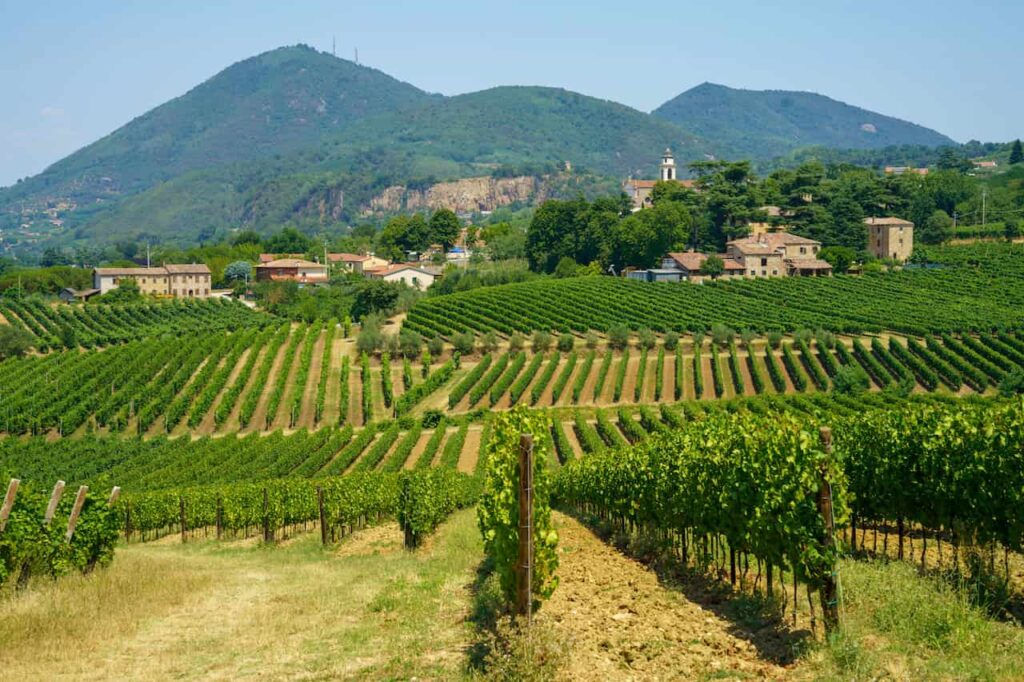
19. Visit Palazzo della Ragione
The Palazzo della Ragione is another historical landmark of Padua. This medieval palace is one of Padua’s most iconic buildings, and for good reason. The palace’s vast hall is adorned with beautiful frescoes that depict astrological signs and the cycle of life—such an intriguing sight to behold! The grand structure is home to a bustling market on the lower floors, adding a lively, contemporary touch to the ancient setting. Touring Palazzo della Ragione allowed me to appreciate Padua’s deep-rooted connection to its medieval past while still embracing the pulse of modern life.
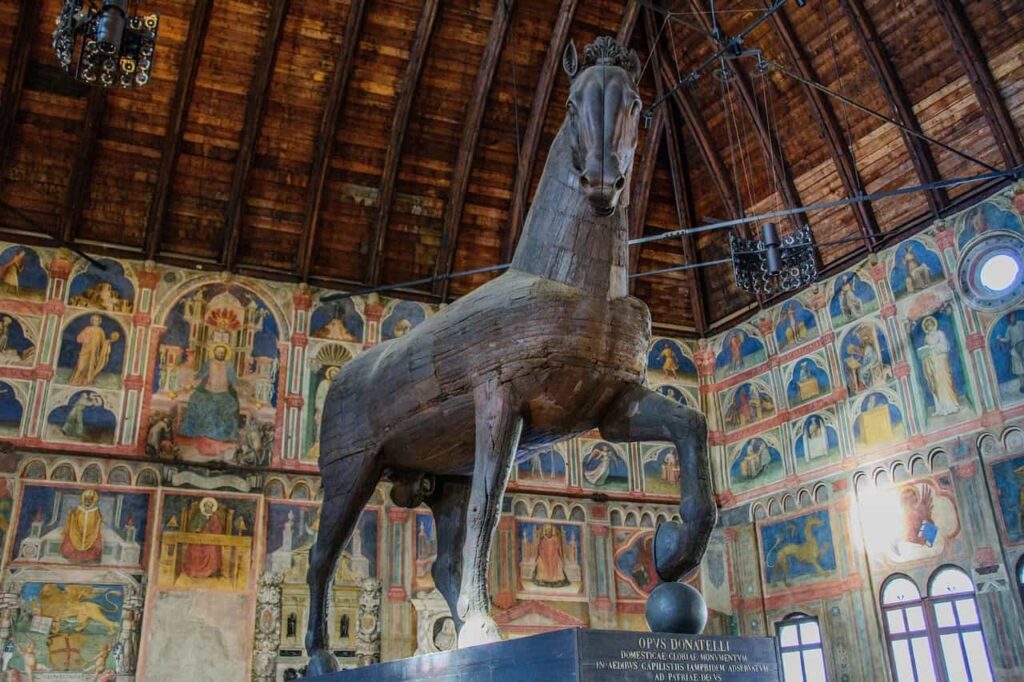
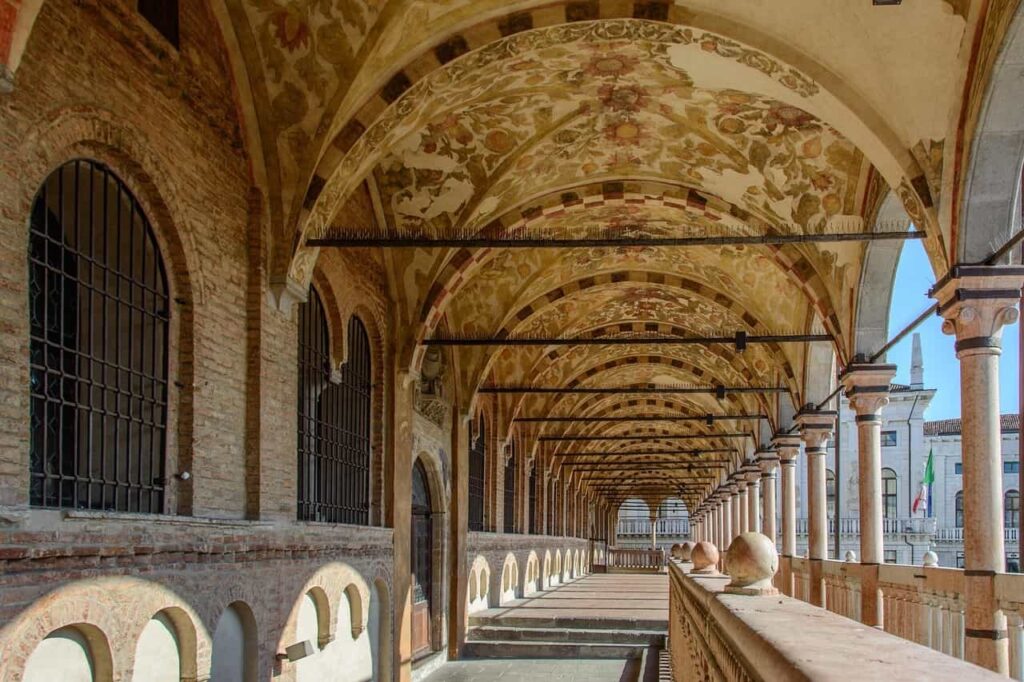
20. Tour Villa dei Vescovi (Bishops’ Villa)
For something a bit outside of the usual city buzz, take a trip to Villa dei Vescovi. This Renaissance villa, just a short drive from Padua, is like stepping into a dream. Set among lush vineyards and rolling hills, the villa itself is a stunning example of classical architecture and offers a glimpse into the grandeur of the past.
The villa is known for its frescoes, which beautifully depict both mythological and everyday scenes from the Renaissance. The surroundings are equally impressive, with manicured gardens and panoramic views of the Veneto countryside. It’s the kind of place where you can just relax and take it all in—whether you’re wandering the gardens or exploring the interior, every moment feels like an escape from the hustle and bustle.
Practical info: Villa dei Vescovi, located in Torreglia just outside Padua, is open Tuesday to Sunday, with hours from 10:00 am to 6:00 pm in the summer and 10:00 am to 5:00 pm in the winter. Admission is €11. The villa is accessible by car, with parking available on-site, or by public transport with a short walk from the bus stop. The villa also has a café and gift shop. You can book the ticket online here!
21. Experience Venice Like a Local on a Guided Tour from Padua
The idea of the crowds and touristy traps might make you hesitate to visit Venice. But you can experience Venice in a whole new way, without the chaos, by taking a guided tour from Padua.
On this tour, a local guide from Padua will lead you through the quiet, hidden gems of Venice—away from the throngs of tourists. You will wander through charming backstreets and quiet canals, stopping at little-known shops, cafés, and historic sites. Of course, no trip to Venice is complete without seeing the iconic Piazza San Marco and the Grand Canal, but the hidden corners will probably steal your heart.
The best part? The tour starts from Padua, so there is no stress about planning transportation, and you will have plenty of time to take in the sights. If you’re looking to experience Venice like a local, this is absolutely the way to do it. Learn more here.
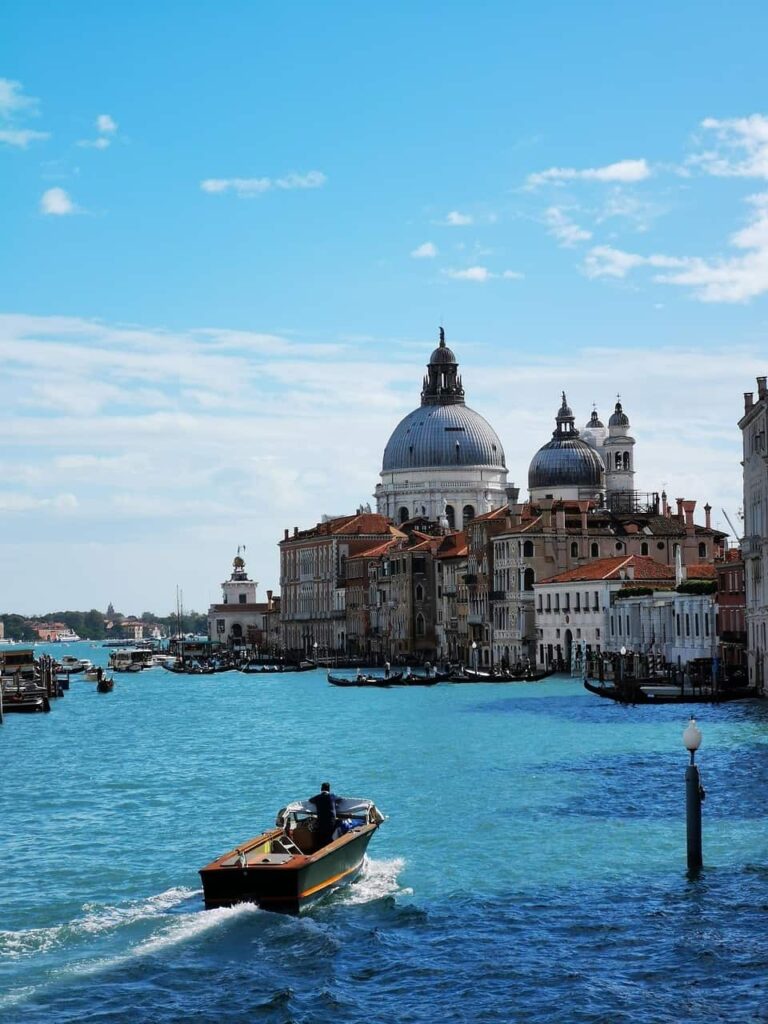
22. Prosecco Wine and Tastings Tour from Padua
If you’re a fan of wine (and who isn’t?), then Padua is an ideal launchpad for a Prosecco wine tour. Take an 8-hour Prosecco tour, and venture out to the Prosecco Hills, just a short distance from Padua. The Prosseco hills appear like a picture-perfect postcard: lush vineyards, rolling hills, and small, family-run wineries that welcome the visitors.
On the tour, you will not only learn about the history and process behind Prosecco production but also have the chance to taste some of the finest bottles in the region. The best part? You will sample Prosecco from several different wineries, each offering its own twist on the sparkling drink.
The highlight of the day is lunch in a cozy vineyard restaurant – there you will dine on traditional Italian food paired perfectly with the Prosecco wines. If you’re a wine lover, this is an experience you simply can’t miss while in Padua. It’s not just about the wine—it’s about the people, the land, and the passion behind every bottle.
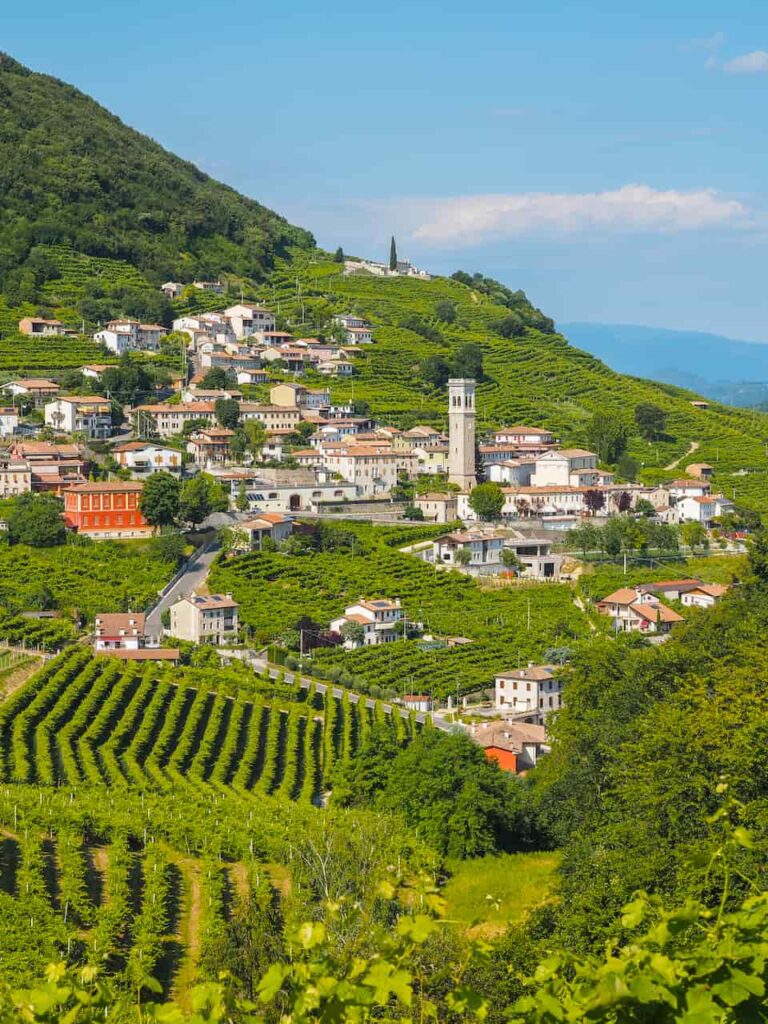
23. Discover Chioggia – The Little Venice on A Day Trip
While Venice is undeniably beautiful, you can visit another Venetian treasure—Chioggia, affectionately known as “Little Venice” on a day trip from Padua. Chioggia is just a short drive from Padua and feels like the perfect alternative to the more crowded tourist spots in Venice.
Chioggia is a quaint, peaceful town with canals, colorful houses, and a charm that’s hard to describe. Wandering along the canals, and admiring the reflections of the buildings in the water seems like pure magic there. Chioggia feels like Venice but without the crowds.
What is to appreciate about Chioggia is its authenticity. While it still has the classic Venetian architecture, there’s a sense of calm and local life that you can’t find in the more tourist-heavy areas. The town is also known for its incredible seafood, so stop at one of the seaside restaurants for a delicious meal of freshly caught fish. After a relaxing lunch, stroll through the colorful streets, pop into a few shops, and just take in the peaceful ambiance.
Chioggia isn’t as well-known as Venice, but that’s what makes it special. If you’re looking to explore a quieter, more intimate version of Venice, Chioggia is the perfect getaway. You can visit Chioggia on this 4.5-h tour from Padua.
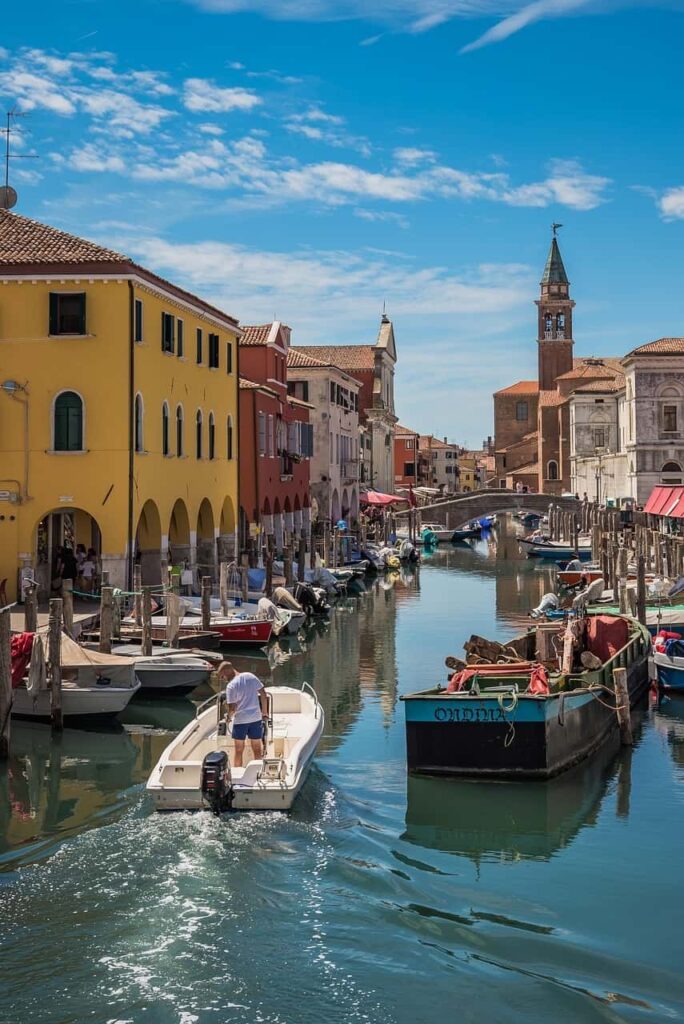
How to Get to Padua
Getting to Padua is easy and convenient. If you’re coming from Venice, it’s just a short 30-minute train ride, and the same goes for Vicenza. From Milan, you can hop on a train for about 2 hours.
If you prefer driving, Padua is well connected by highways, so it’s just a short drive from most major cities in northern Italy (35 minutes from Venice, 1 hour from Verona, 1 hour and 20 minutes from Bologna, and 2 hours and 30 minutes from Milan).
Where to Stay in Padua
For accommodations, Padua has everything from luxury hotels to charming bed-and-breakfasts. If you’re looking for something central, Hotel M14 offers modern amenities with easy access to major attractions. If you prefer something more boutique, consider staying at Hotel Al Fagiano, a cozy and well-located spot.
Getting Around Padua
Padua is a small city, so it’s easy to get around on foot. The main attractions are within walking distance of each other, and the local buses and trams are convenient if you need to travel farther. You can also rent a bike for a fun way to explore the city.
Best Time to Visit Padua
The best time to visit Padua is during the spring and fall when the weather is mild and the crowds are thinner. Summer can get hot, so I’d recommend avoiding the peak heat if possible.
How Much Time Do You Need in Padua?
You can easily explore Padua in 2-3 days. It’s a compact city, and while there’s plenty to see and do, you won’t feel rushed.
Is Padua Worth Visiting?
Absolutely! Padua is one of Italy’s best-kept secrets. It’s rich in history, culture, and art, and offers a more relaxed experience than its famous neighbors. If you’re looking for an authentic Italian experience, Padua is definitely worth a visit.

